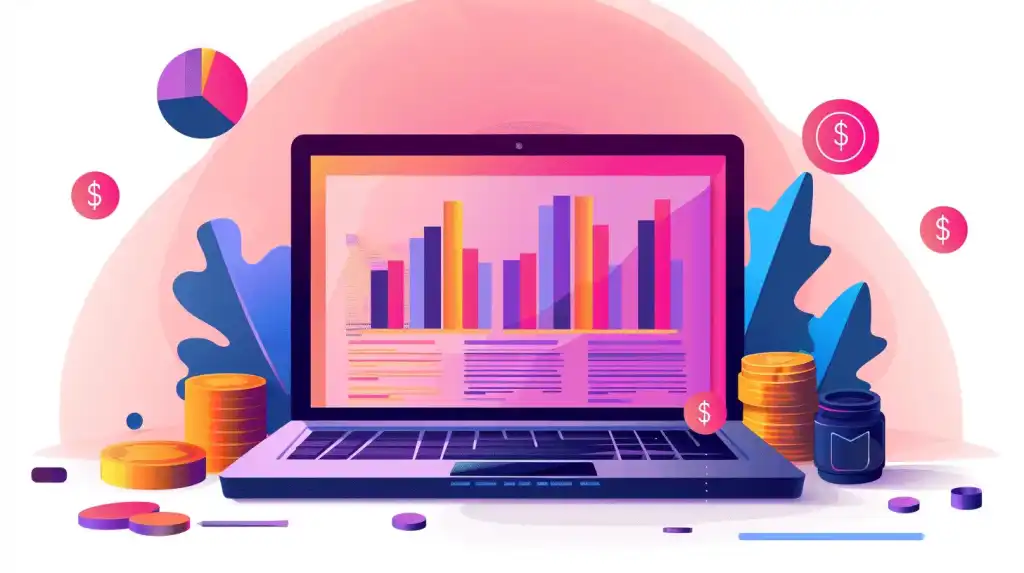09 May 2025
We've all been there—you’ve got your eye on that shiny new car, dream vacation, or maybe even a down payment on a house. But wait, how on earth are you going to afford it? Big purchases can feel overwhelming, especially if you're not sure how to plan for them financially. The good news? It’s totally doable with the right strategy.In this guide, I’m going to walk you through exactly how to budget for a big purchase, step by step. Ready? Let’s dive in!
Why Is Budgeting So Important?

Before we get into the nitty-gritty, let’s talk about why budgeting is crucial for making a big purchase. Think of your budget as your GPS. Without it, you’re wandering aimlessly, unsure if you’re heading in the right direction or away from your financial goals.
Budgeting ensures that you stay on track, avoid debt, and actually afford that big-ticket item without sacrificing your financial health. Plus, it helps reduce stress. Who doesn't want a little less financial anxiety, right?
Now, let’s break down how you can budget effectively for your next major purchase.
Step 1: Identify Your Big Purchase
First things first: What are you saving for? Whether it’s a new car, a home renovation, or even a luxury item like a designer handbag, you need to clearly define your goal. This helps you stay focused.
Be Specific
Don’t just say, "I want to buy a car." Say, "I want to buy a 2023 Toyota Camry, and it costs $30,000." The more specific you are, the better you can plan.Do Your Research
Once you know what you want, do a little homework. Check prices, compare options, and factor in additional costs like taxes, maintenance, or accessories. This will give you a more accurate picture of the total amount you need to save.> Pro Tip: Always budget for a little more than the item’s price. Unexpected costs tend to pop up when you least expect them!
Step 2: Set a Timeframe
Now that you know what you’re aiming for, ask yourself: How soon do you want (or need) to make this purchase? Is it in six months, a year, or three years? Setting a deadline helps you figure out how much you need to save each month.
Short-Term vs. Long-Term
If your goal is short-term (say, six months to a year), you’ll need to save more aggressively. If it’s long-term (over a year), you can take a more gradual approach.For example, if you’re saving $10,000 for a vacation in one year, you’ll need to put away roughly $833 per month. If you have three years to save, that drops to about $278 per month. See how the timeline affects your budget?
Step 3: Evaluate Your Current Financial Situation
Alright, this is the part where you get real with yourself. What’s your financial situation like right now?
Analyze Your Income and Expenses
Take a close look at your income and your regular expenses—rent, utilities, groceries, Netflix subscription, etc. What’s your total monthly income after taxes? What are your essential monthly expenses?Once you’ve got that all laid out, calculate how much you have left over. This is the cash you can start allocating toward your big purchase.
Identify Areas to Cut Back
If there’s not much left over after your expenses, don’t panic. Take a look at where you can cut back. Maybe you can dine out less or cancel some of those streaming services you’re not even watching. Small changes can make a big difference over time.> Quick Tip: Track your spending for a month to get a clear picture of where your money is going. You might be surprised how much those daily lattes add up!
Step 4: Set a Savings Goal
Now that you’ve evaluated your financial situation, it’s time to set a realistic savings goal. How much do you need to save each month to hit your target?
Break It Down
Take the total cost of your big purchase, and divide it by the number of months you have left until your deadline. For example, if you need $5,000 in 10 months, that’s $500 per month.Automate Your Savings
One of the easiest ways to make sure you stick to your plan is to automate your savings. Set up an automatic transfer from your checking account to a savings account each month. Out of sight, out of mind, right? This way, you won’t be tempted to spend the money on something else.Step 5: Choose the Right Savings Account
Speaking of savings accounts, where you stash your cash matters. You don’t want to just pile it up under your mattress, right?
High-Yield Savings Accounts
For short-term goals (anything under five years), a high-yield savings account is a great option. These accounts offer higher interest rates than traditional savings accounts, which means your money grows a little faster. While it won’t make you rich, every bit helps!Consider a Certificate of Deposit (CD)
If you’re saving for something a few years down the road and don’t need immediate access to the money, a CD can offer even better interest rates. The catch? Your money is locked in for a set period, and you’ll get penalized if you withdraw it early.> Pro Tip: Make sure the savings account or CD you choose is FDIC-insured, so your money is protected.
Step 6: Deal with Debt (If You Have It)
If you’ve got existing debt—whether it’s credit card debt, student loans, or a car payment—you need to factor that into your budget. Should you focus on paying off debt or saving for your big purchase?
Prioritize High-Interest Debt
If you have high-interest debt (like credit card debt with a 20% interest rate), it’s usually better to pay that off first. Why? Because the interest you’re paying on that debt likely outweighs the interest you’d earn on your savings.However, if your debt has a low interest rate (like a student loan at 4%), you might be able to do both: pay off debt while saving for your big purchase.
Step 7: Find Ways to Boost Your Income
If cutting back expenses isn’t enough to meet your savings goals, consider looking for ways to increase your income.
Side Gigs and Freelancing
Think about taking on a side hustle to earn extra cash. Whether it’s freelancing online, driving for a rideshare service, or selling stuff you no longer need, there are plenty of ways to bring in more money.Ask for a Raise
If you’ve been at your job for a while and you’re performing well, now might be the time to ask for a raise. It never hurts to ask, and the worst they can say is no.> Tip: Use any unexpected windfalls—like tax refunds or bonuses—toward your big purchase. It’s tempting to spend it, but it’ll get you closer to your goal faster.
Step 8: Track Your Progress
Congrats, you’ve done the hard work of setting up your budget! But you’re not done yet. You need to track your progress to make sure you’re staying on course.
Regular Check-ins
Once a month, take a few minutes to review your savings and see how close you are to your goal. Are you on track? If not, adjust your budget or timeline as needed.Stay Motivated
Saving for a big purchase can sometimes feel like a slog, but keep your eyes on the prize. Visualize yourself driving that new car or lying on the beach during your dream vacation. It’ll help you stay motivated.Step 9: Make the Purchase (Guilt-Free!)
You did it! You’ve saved enough for your big purchase. Now comes the fun part—spending the money you worked so hard to save.
Because you budgeted and planned, you can make this purchase without any guilt or financial anxiety. You’ve earned it!
Final Thoughts
Budgeting for a big purchase doesn’t have to be a daunting task. By breaking it down into manageable steps, setting clear goals, and staying disciplined, you can afford that big-ticket item without going into debt or sacrificing your financial health.
Remember, it’s all about balance. You can still enjoy life while saving for something special. Just stay focused, track your progress, and before you know it, you’ll be making that big purchase with a smile on your face.
So, what are you waiting for? Time to start budgeting for your next big adventure!


